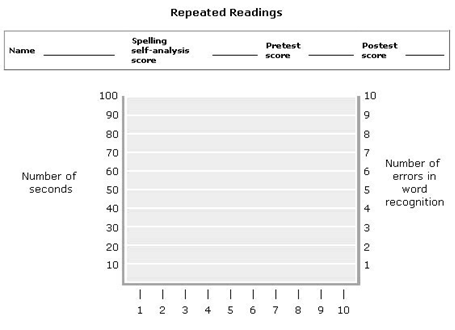Introduction
A fluent reader has automatic word recognition, which promotes phrasing and intonation. Automatic word recognition enhances smooth, fast and expressive reading. Consequently, a student will develop silent reading skills, which is a fast reading method compared to oral reading. Good reading approach requires comprehensive gradual learning steps. This paper outlines a three-day fluent teaching and reading plan.
Reading Lesson day 1
The objective of this lesson is to enhanced students’ word recognition capacity. Additionally, the lesson is structured to build reading speed. The lesson is designed to meet the needs of children with poor word recognition and slow in readers.
Lesson Activity
A teacher selects a passage, which the students will read in class. The passage should be between 100-200 words. Additionally, the selected passage should be taken from a book of slight higher language level than the students. The teacher then has each student read in turn. While a student reads, the teacher time and record all mispronounced words.
A teacher should have a normal reading standard time and expected number of word pronunciation errors. The teacher may apply different coloured pencils to mark time and errors. After a student is through with passage reading, the teacher help the student identify his/her errors and make him or her repeat the words.
The student is taken to the passage again. The process of timing and marking errors is repeated. The teacher then evaluates the student’s performance through a table as shown below. He/she is made to repeat the passage as a teacher corrects him/her until the whole passage is read successfully.
Reading Evaluation Table

Reading Rationality
Repeated reading has shown a lot of success in promoting reading fluency. Mather and Goldstein say, “Through repeated reading, fluency can be improved as long as students are provided with specific instructions and procedures are used to monitor their progress” (Mather & Goldstein, 2001, P.236).
Repeated reading technique also allow a teacher to monitor each and every student’s performance. Finally, it is an effective method in wide peer tutoring program (Gunning, 2010).
Reading Lesson day 2
This reading’s objective is to develop student’s reading fluency through audio-learning devices. The student will be able to learn through listening to tapes and later repeating the same passages. Audio learning enables students to develop their fluency through practicing to imitate the voice while following their passage.
Lesson Activity
A tutor picks up an appropriate passage and voice records. While recording, a tutor should ensure that the voice prompt starts and ends with the passage, without lapse times. Voices should be recorded about 7 inches away from the microphone. While recording, a teacher will show a lot of interest in the passage to capture students’ interest.
After recording, a teacher plays the voice repeatedly. Consequently, the student is made to follow the passage silently. The student is then made to read the passage, first silently and then loudly without the voice aid. The process should be repeated until the student perfectly reads the passage.
The rationality behind this method is that following voice helps a student to master word pronunciation. Consequently, a student’s word recognition speed increases while he/she tries to keep up with the voice speed. A teacher will be able to evaluate the student performance when he/she reads loud.
Reading Lesson 3
The objective of this reading is to enable students improve their word intonation and phrasing. When students’ masters word phrasing and intonation, they will be urged to carry out more reading by themselves. Most students who have undergone through choral reading, develops a lot of confidence and always try lots of different materials.
Lesson Activity
A teacher selects a passage and writes it on the board. With the aid of a pointer he/she reads aloud for all the students to repeat after him/her. The pointer must move with the words being pronounced. The teacher start reading slowly and gradually increases speed. The process is repeated several times.
To evaluate the students’ performance, a teacher selects a reader randomly to read with the aid of the pointer. In case of errors the teacher points out the word and makes the student repeat. The teacher must make all the students to read. The teacher should ensure that the students’ connect the words while reading.
According to Mather and Goldstein, “when necessary, remind the student to keep his or her eyes on the words. Successful decoding requires the reader to connect the flow of spoken language with the flow of text” (Mather & Goldstein, 2001, p.241).
Choral reading has been used by many teachers successfully. It builds learners confidence in reading through individual practice. Students will develop reading speed, effective intonation of words and good phrasing while reading.
When students are made to follow after the teacher severally, they are exposed to automatic word mastery. Word learning become simpler since the students can join several words that make senses by use of a pointer (Harris & Hodges, 1995).
References
Gunning, T. (2010). Creating literacy instruction for all students (7th ed.). Boston, MA: Allyn and Bacon/Pearson Education.
Harris, T., & Hodges, R. (1995). The literacy dictionary, the vocabulary of reading and writing. Newark, DE: International Reading Association.
Mather,& Goldstein, S. (2001). Learning Disabilities and Challenging Behaviours: A Guide to Intervention and Classroom Management. New York: Paul H. Brookes Publishing Co.